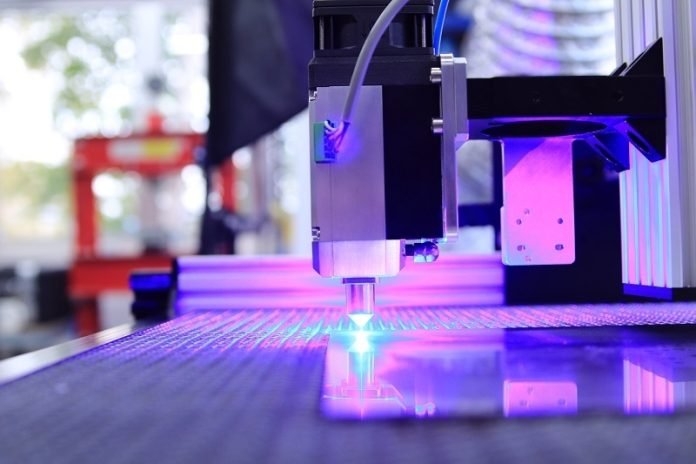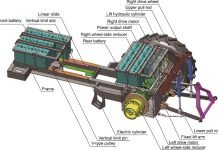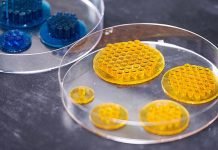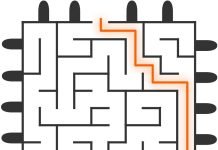
Scientists at Heriot-Watt University in Edinburgh have made an incredible breakthrough in 3D printing that has the potential to revolutionize the manufacturing industry.
Led by Dr. Jose Marques-Hueso, the research team has developed a new method of 3D printing using near-infrared (NIR) light.
This technique allows for the creation of complex structures containing multiple materials and colors, overcoming previous limitations in intermixing materials.
The team modified an existing 3D printing process called stereolithography to achieve this feat.
Traditionally, a 3D printer applies a blue or UV laser to a liquid resin, which is then selectively solidified layer by layer to build an object.
However, this approach has been restricted in its ability to mix different materials effectively.
In their groundbreaking project, the scientists utilized a NIR light source capable of printing at much greater depths into the resin vat, without the need for layer-by-layer printing.
This unique approach offers tremendous opportunities for various industries, particularly those that rely on specialized parts, such as the health and electrical sectors.
Dr. Marques-Hueso explains, “The novelty of our new method is to use the NIR invisibility windows of materials to print at a depth of over 5 cm, compared to the conventional technology’s depth limit of around 0.1 mm.
This means we can print with one material and later add a second material, solidifying it at any position in the 3D space, not just on the outer surfaces.”
The team’s engineered resins contain nanoparticles that exhibit the phenomenon of optical upconversion.
These nanoparticles absorb NIR photons and transform them into blue photons, which solidify the resin.
This “non-linear” process allows the NIR light to penetrate deep into the material, appearing transparent, and only solidify the desired material within.
This advanced 3D printing method enables the printing of multiple materials with different properties within the same sample. For instance, flexible elastomers and rigid acrylic can be printed together, making it useful for businesses like shoe production.
The technique opens up a world of possibilities, including printing objects inside cavities, restoring broken items, and even in-situ bioprinting through the skin.
Dr. Marques-Hueso further explains the potential applications, stating, “In the same research project, we had previously developed a resin that can be selectively copper-plated.
Combining both technologies, we can now 3D print with two different resins and selectively cover just one of them in copper. This way, we can create integrated circuitry in 3D, which is very useful for the electronics industry.”
Despite its incredible capabilities, this cutting-edge technology comes at a surprisingly low cost. Dr. Marques-Hueso highlights that the entire machine can be built for less than £400.
The use of specialist materials in the process allows inexpensive lasers to be utilized, unlike other advanced technologies that require costly equipment.
With promising results to support their claims, the research team aims to collaborate with businesses to further develop this remarkable technology.
Their study has been published in the journal Applied Materials Today, marking an important milestone in the world of 3D printing.




